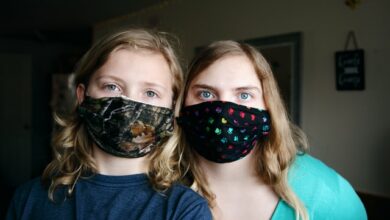A
A
A
Continuous, round-the-clock awareness has been centered around possible contractions of the coronavirus. New symptoms have been added to case files for the development of COVID-19. The CDC has implemented a new list of symptoms that show reports to link patients to the coronavirus. The list of new COVID-19 causes centers around the following: chills, shaking with the onset of chills, muscle soreness and pain, headaches and migraines, sore and itchy throat, and new development of loss of sense of smell and taste. These new developments come directly from directives placed by the Centers for Disease Control and Prevention (CDC) and the World Health Organization (WHO). Both entities have cited additional research studies that highlight these tendencies in patients dealing with the virus, creating more awareness measures for patients that exhibit these functions or lack of functions.
Each of these functions comes with particular awareness signs and red flags to determine the severity of the illness. Below are a few of the generalized markers surrounding each of the six new causes that have been added to the watch list for virus development.
Chills
Read More »
Chills arise when our bodies encounter a need to produce heat to combat cold conditions. The onset of chills, without a cold environment being present, can come from the feeling of being cold. The exchange without the present tense of the cold environment is the main cause for concern. Our muscles will experience multiple contractions followed by relaxations. The increased production of muscle contractions reduces our bodies’ natural tendency to regulate hot and cold temperatures, often resulting in fever or an increase in the core temperature of the body. These tendencies can be raised to levels of unbearable production, limiting the effectiveness of body temperature regulation and muscle control.
Shaking with the Onset of Chills
When our body temperature drops, we experience an increase is shakes and shivers. The shaking is the natural submission our body creates to attempt to regulate our body temperature. The shaking is tied to chills, as they occur when we experience heightened levels of cold throughout our body. The shaking does not have to come as a product of the environment, which once again raises the red flag of concern for body temperature regulation and muscle issues.
Muscle Soreness and Pain
When our body refutes some of the recovery tendencies or fails to signal strength components to muscle coverings, our bodies can become weak and sore. Soreness occurs when the muscles experience an increase in contractions without the presence of a lengthy recovery period. The contraction production inhibits our ability to find periods of rest and relaxation, causing the over-use of muscles and submitting pain receptors throughout the body. Muscle soreness and pain can also arise without the proper rest terms throughout night-time rest periods and sound sleeping behaviors. When we keep our muscles active and in-use, our body experiences a slow-down in the recovery process, adding pain and soreness to the crucial components of the body.
Headaches and Migraines
The development of head pain has also been shown to increase the development of the virus. Common headaches and migraine pain come from sound waves and other, environmental factor. Simple head pain produced from listening to music too loudly, being exposed to loud environments or bumping of the head are small inclusions that should not cause for alarm. Chronic pain and migraine development, without a history of the tendencies, should raise the red flag for patients. Linking head pain and soreness to the temple to the virus can be associated if the onset becomes progressively unbearable for the user.
Sore and Itchy Throat
Sore and itchy throat developments are usually paired with common cold tendencies. Over-use of the voice box, food inflammations, dry mouth tendencies, and open-mouth breathing and sleeping are all onsets of sore throat that can arise without prior issues or underlying causes. The period of pain should outlast a couple of days before the user can raise their concern levels. Treatments and lozenges can help to reduce swelling and dispel the idea of virus interaction. Consistent pain over the course of a week or more, with treatment measures applied, would be the main cause of concern for virus ties.
New Loss of Smell or Taste
There are many different behaviors or daily practices that can cause us to lose our sense of smell and taste. Tobacco users and cigarette smokers experience these lasting sensations as use increases or continue over a pattern of time. We lose the sense of taste when we inhibit our throat passages with the consumption of hot foods or spicy dishes. Our loss of smell can be attributed to allergies or seasonal viruses, which may be a condition for dispelling virus concerns. New loss of these sensations without the disposition to tobacco products or allergies is a cause for concern






